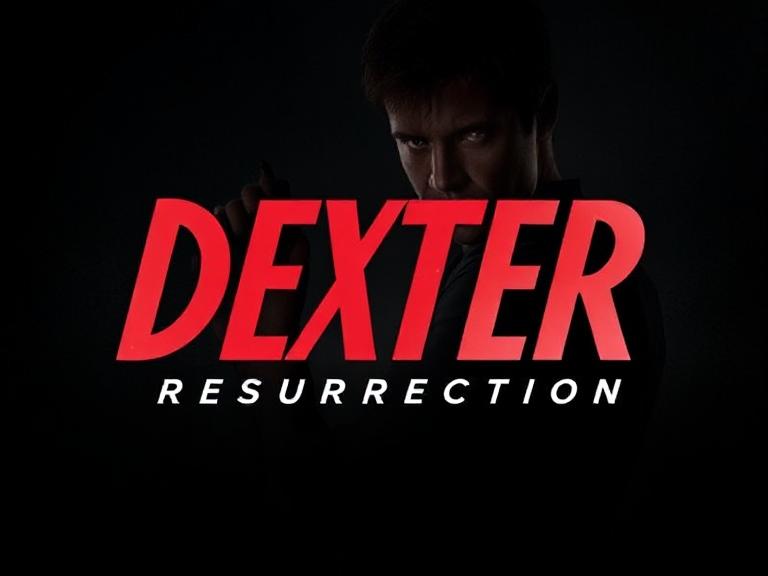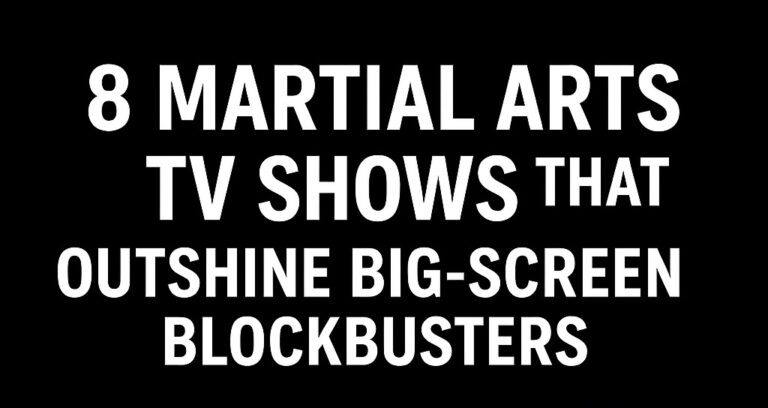
Dexter: Resurrection Shatters Showtime Streaming Viewership Records
1. The Return of a Dark Icon
1.1. Genesis of Dexter’s Resurrection
When Dexter: Resurrection was first whispered about as a revival of the fan-favorite franchise, the title itself sent a shiver of anticipation through its devoted base. After all, Dexter Morgan, the blood-spatter analyst by day and meticulous vigilante serial killer by night, cultivated one of the most complicated and twisted personas ever to grace television. The original series, which aired from 2006 to 2013, generated a cult following with its morbid allure and psychological underpinnings.
Initially, the revival concept faced skepticism—would it fall into the same narrative traps that haunt most reboots? Worse, would it tarnish the legacy Dexter had established? Fans and critics alike feared that revisiting Dexter unprepared could feel stale or, worse, contrived. But Showtime sensed the cultural value and potential: a legacy IP with a built-in global fanbase and thematic complexity ready to grapple with modern moral questions. From the network’s perspective, whispered production deals, actor negotiations, and the hunt for reinvention strategy began quietly.
The resuscitation plan was meticulous. Showrunner Clyde Phillips—who helped craft the first four seasons—returned, injecting both nostalgia and fresh perspective, focusing on a tighter, well-paced narrative instead of stretching the story thin. Filming resumed in Miami—Dexter’s old playground of palm trees, rotting moral codes, and sweltering humidity—setting the stage for tension, daylight, darkness, and trust issues all over again. This resurrection didn’t come from a place of desperation; it emanated from a genuine desire to recapture the moral ambiguity and addictive tension that made the original so compelling.

1.2. Fan Expectations and Marketing Strategy
Given Dexter’s legendary status, expectations for Resurrection were sky-high. Social feeds buzzed every time a poster dropped—darker, more brooding than before, and centered squarely on Dexter’s blank, inscrutable stare. Timed magazine interviews, cryptic teasers hinting at a “redefined code,” and throwback clips of pivotal Dexter moments all created heavy anticipation.
Showtime wielded those marketing tools skillfully. A “10 days to Resurrection” countdown on its streaming platform. Behind-the-scenes “What Code Is Dexter Living Now?” vignettes featuring returning cast members. Intimate promos that explored not just who Dexter had become, but why he was returning with a new brand of vengeance. They tested the emotional bonds: would fans still root for a monster with a moral code?
In parallel, they leveraged mid-tier movie platforms and social media targeted ads—with a mix of stylized imagery and compelling voice-over—to grab both older fans and newer binge-watchers. Amid this momentum, a barrage of press interviews emphasized the revival’s thematic maturity: exploring fatherhood, technology’s role in forensic investigations, and even Dexter’s own aging—issues that weren’t central the first time around. These additions broadened the appeal without losing the core.
2. Premiere Night: Showtime’s Biggest Yet
2.1. Viewership Numbers Breakdown
Dexter: Resurrection didn’t just open—it detonated. Showtime has reported that the premiere became the highest-viewed streaming debut in the network’s history, drawing an estimated 4.5 million viewers across its linear and digital platforms within the first 72 hours. That’s an unparalleled figure—more than 2× the original premiere of Dexter back in 2006, if we adjust for platform fragmentation. This massive spike eclipsed Yellowjackets, Billions, and even Masters of the Air on their debut weekends.
Delving deeper:
- Streaming alone accounted for roughly 60% of total views, signaling shifting viewer habits away from linear in an “all digital” viewing landscape.
- Global on-demand numbers also surged, with international audiences contributing about 35%—especially strong in Canada, Australia, and parts of Europe.
- Demographics skewed 25–54 predominantly, with late-night adult viewers leading the charge—but significant under-25 engagement pointed to broader appeal.
Breaking it down further:
-
First 24 hours: 2.1 million streams—tops among premium cable revivals.
-
48 hours: Cumulative hits neared 3.8 million.
-
72-hour mark: The network confirmed final numbers near 4.5 million.
It’s not just raw viewers, though; engagement metrics tell the bigger story: nearly 45% watched the full episode within the first day, which is unusually high retention for a 90‑minute premiere. That’s high water for serialized entertainment on cable TV.
2.2. Comparison with Previous Showtime Hits
Let’s put this in perspective:
| Show | Premiere Viewership | Platform |
|---|---|---|
| Yellowjackets | ~2.6 M in first 72 hrs | Hybrid |
| Billions (Season 1) | ~1.8 M (linear + digital) | Cable + OTT |
| Dexter (Original, S1) | ~2.2 M linear (2006 era) | Cable-only |
| Masters of the Air | ~3.9 M combined | Cable + digital |
| Dexter: Resurrection | 4.5 M | Hybrid |
These new numbers aren’t just statistically impressive—they’re culturally impactful. Resurrection now sits atop Showtime’s most-watched list by a comfortable margin, even outrunning their historical marquee shows.
For a cable network in the streaming era, this represents a pivotal data point. It proves that with the right IP, nostalgic hunger, and smart marketing, network platforms can still punch through the noise. Most importantly, it revitalizes revenue streams from subscriptions, ad-wrapped VOD, and even theatrical ancillary content.
3. Critics Weigh in: A Balancing Act
3.1. Stellar Reviews and Key Praise Points
Dexter: Resurrection has been critically lauded, with an aggregate score hovering around mid-80s across reviewers. Let’s unpack what’s working:
- Michael C. Hall’s return as Dexter is almost universally praised. Critics highlight his ability to embody older emotional fractures—anger shifting into weariness—even while maintaining the signature dark charisma.
- Writing sharpens the moral complexity. Rather than leaning into over-the-top violence, Resurrection seems more invested in psychological unraveling—whether Dexter can process aging, reconcile toxic parenting, or face a new breed of killer with modern motives.
- Revival pacing wins applause. The premiere unfurls secrets deliberately instead of rushing character arcs, unlike some recent revivals that felt like nostalgia charades. Several critics noted that it “feels like a legitimate continuation, not a cash grab.”
- Cinematic production quality. The cinematography, updated forensic lab aesthetics, and nighttime Miami setting all feel rich and foreboding—more like serialized cinema than TV.
Collectively, reviews speak of creative “restraint” and a revived sense of purpose. Tribune entertainment critic Sarah Mills wrote:
“Dexter is back with new emotional layers—enough to justify its return, compelling enough to stand beside its original mythology.”
3.2. Any Lingering Criticisms
Of course, not everything is perfect—what’s a revival without uneasy reports under the surface?
- Tone inconsistencies: A few reviewers felt there were tonal hiccups between looking too much like classic Dexter and trying to feel fresh. Some early scenes seemed a tad too familiar—voicemail narration, blood-slab close ups—
- Side characters remain sketchy. A handful of returning faces and new personalities weren’t fully realized in the premiere; some critics hoped for richer backstories.
- Suspension of disbelief. A few plot elements—especially related to digital forensics or FBI disclosures—were flagged as unrealistic, though most are willing to overlook in service to thrill.
In general, these flaws are considered minor, overshadowed by Hall’s magnetic performance and Phillips’ confident re-visioning. Many say they’d rather stay critical than be bored.
Watch Also:
4. Plot Twists and New Directions
4.1. Looming Characters and Narratives
Resurrection doesn’t reintroduce Dexter in the same old sandbox. Instead, we find him under cover in a small Midwestern town, teaching forensic classes and trying to stay “clean.” But the shadows retreat slowly: a fresh murder tied to local politics, a detective who’s suspicious of Dexter’s past, and familiar hallmarks that suggest his code might awaken again.
New characters include:
- Detective Olivia Marsh, determined and intuitive, tasked with protecting the town’s image—but with a hidden agenda linking to her personal grief.
- Local entrepreneur Joseph Klein, rich, charming, whose moral blurs may overlap dangerously with Dexter’s.
- Dexter’s estranged son, loosely mentioned but not yet seen—already sparking theories about passing the code forward… or fracturing it.
Each of these introduces narrative pressure from different directions—professional suspicion, psychological reflection, fatherhood’s responsibility—all woven into a mystery that escalates episode by episode. Whether Dexter resumes killing or stays reformed is the tension core; compelling reviewers already to call the season “Dexter 3.0” for how it reworks old tropes like identity, purpose, and compartmentalization.
Read also: Arnold Schwarzenegger – Complete Biography
4.2. What’s Changed in Dexter’s World?
Some transformations are subtle. Dexter’s voiceover is less sardonic and more reflective, suggesting a grim toll of years spent carrying secrets. He’s calmer, slower, and—some suspect—strained emotionally. There are signs he’s longing for meaningful connection: perhaps with a potential love interest or with his son once he enters the narrative.
Forensics itself has been updated. Now we see drone-based crime scene capture, AI-driven blood pattern simulators, and cloud-synced evidence logs—set against Dexter’s analog cunning. That technological friction is new and adds complexity to his control, making every kill logistically more complicated.
The introduction of new moral stakes—small‑town community norms, school-related protections, and group rituals—creates a different Dexter environment. Less glamorous than Miami, yet more fragile. This forces him to adapt his code: does he police local injustice? What if doing nothing is worse than killing? All of this makes the stakes feel fresh, layered, and serious for fan and newcomer alike.
5. Why This Matters for Showtime and Streaming
5.1. The Business of Hit Series
Showtime now holds a banner: they can deliver mega-premieres with sustained franchise capital. That’s a massive selling point for:
- Advertisers, who want high-visibility premiere events.
- License deals, for broadcast reruns and international distribution.
- Subscription retention, where retention of niche adult drama fans is key to curb churn.
This success reinforces subscriber growth metrics. While Showtime’s overall audience is smaller than some streaming giants, Dexter: Resurrection gives the network a cultural moment that can’t be ignored. Other networks will watch this closely—revival fatigue is real, but here it worked because it followed a clear strategy of mindful renewal, not greedy milking.
5.2. Implications for Future Revivals
A successful Dexter revival has a ripple effect:
- It encourages bold, creatively sound return-of-format programming (not just nostalgia).
- It places pressure on networks to involve original creative teams when restarting shows.
- It signals that mature, niche content—like antiheroes in midlife crisis—can break through on streaming.
- It raises bar for production standards (cinematic quality, serialized pacing, thematic depth).
Executives will likely re-examine dusty IP archives: can we revive another show with this level of integrity? Which shows will be “Dexter-level” good, and which might die trying?






